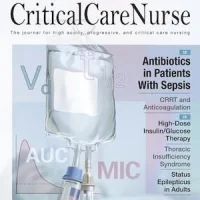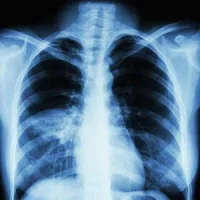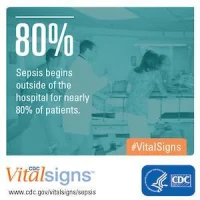A single centre retrospective study that evaluated the accuracy in high-risk trauma patients of the infection-related ventilator-associated complications (IVAC) algorithm for detecting ventilator-associated pneumonia (VAP) found that it failed to detect nearly three-quarters of patients with VAP. The study is published in Respiratory Care.
Following the publication in 2008 of a surveillance definition of healthcare-associated infection and criteria for specific types of infection by the U.S. Centers for Disease Control and Prevention (CDC)/National Healthcare Safety Network (NHSN), an algorithm for surveillance of ventilator-associated events was published in 2013. It focuses on identifying mechanically ventilated patients with worsening respiratory status, on the basis of changes in PEEP and FIO2, to aid in identifying infection-related ventilator-associated complications (IVACs).
This study, by Annop Piriyapatsom, MD, Department of Anesthesiology, Siriraj Hospital, Mahidol University, Bangkok, Thailand and colleagues from Massachusetts General Hospital (MGH), included trauma patients treated by MGH, who were admitted to the ICU, required mechanical ventilation for >48 h, and received a blood transfusion. The new IVAC surveillance and the criteria for ]VAP-NHSN diagnosis were applied. The accuracy of the new IVAC surveillance for detecting VAP-NHSN was determined, and the clinical outcomes were compared between groups.
The algorithm failed to diagnose nearly 75% of subjects with VAP. The sensitivity, specificity, and positive and negative predictive values of IVAC for VAP-NSHN identification were 28.12%, 91.45, 58.06%, and 75.14%, respectively. There was no significant difference in clinical outcomes between subjects with VAP-NHSN only and those with both IVAC and VAP-NHSN. The IVAC algorithm also identified subjects requiring increasing ventilatory support due to a range of conditions unrelated to VAP.
See Also: VAP, VAC, IVAC and Ventilator-Associated Events: The Need for Objectivity for Surveillance
In an accompanying editorial, Philippe G Jorens, MD, PhD, Head of ICU Lab, UZ Antwerp, Belgium, argues that retaining the old definition of ventilator-associated pneumonia (VAP) is not old-fashioned. Jorens notes that the exact role of the microbiological detection in VAP is a matter of debate. The diagnostic challenges include false-positives, limited sensitivity of cultures, and the influence of antibiotic therapy. In particular the clinical signs of VAP lack specificity and sensitivity, invasive techniques are often needed to recover samples and lab techniques to detect technique add a time delay.
Jorens writes: "It is remarkable that many of the definitions for disorders and syndromes in critically ill patients lack sensitivity and specificity, although our understanding of the essential nature of these pathological syndromes is continuously increasing. Are we missing the essential clue in VAP that can be used in a universal and clear definition? Until further notice, it might be safer to adhere to an older, far from perfect, but usable definition of VAP: Aren't old friends and old wine best?"
Source: Respiratory Care
Image credit: Wikimedia Commons
Following the publication in 2008 of a surveillance definition of healthcare-associated infection and criteria for specific types of infection by the U.S. Centers for Disease Control and Prevention (CDC)/National Healthcare Safety Network (NHSN), an algorithm for surveillance of ventilator-associated events was published in 2013. It focuses on identifying mechanically ventilated patients with worsening respiratory status, on the basis of changes in PEEP and FIO2, to aid in identifying infection-related ventilator-associated complications (IVACs).
This study, by Annop Piriyapatsom, MD, Department of Anesthesiology, Siriraj Hospital, Mahidol University, Bangkok, Thailand and colleagues from Massachusetts General Hospital (MGH), included trauma patients treated by MGH, who were admitted to the ICU, required mechanical ventilation for >48 h, and received a blood transfusion. The new IVAC surveillance and the criteria for ]VAP-NHSN diagnosis were applied. The accuracy of the new IVAC surveillance for detecting VAP-NHSN was determined, and the clinical outcomes were compared between groups.
Results
The algorithm failed to diagnose nearly 75% of subjects with VAP. The sensitivity, specificity, and positive and negative predictive values of IVAC for VAP-NSHN identification were 28.12%, 91.45, 58.06%, and 75.14%, respectively. There was no significant difference in clinical outcomes between subjects with VAP-NHSN only and those with both IVAC and VAP-NHSN. The IVAC algorithm also identified subjects requiring increasing ventilatory support due to a range of conditions unrelated to VAP.
See Also: VAP, VAC, IVAC and Ventilator-Associated Events: The Need for Objectivity for Surveillance
In an accompanying editorial, Philippe G Jorens, MD, PhD, Head of ICU Lab, UZ Antwerp, Belgium, argues that retaining the old definition of ventilator-associated pneumonia (VAP) is not old-fashioned. Jorens notes that the exact role of the microbiological detection in VAP is a matter of debate. The diagnostic challenges include false-positives, limited sensitivity of cultures, and the influence of antibiotic therapy. In particular the clinical signs of VAP lack specificity and sensitivity, invasive techniques are often needed to recover samples and lab techniques to detect technique add a time delay.
Jorens writes: "It is remarkable that many of the definitions for disorders and syndromes in critically ill patients lack sensitivity and specificity, although our understanding of the essential nature of these pathological syndromes is continuously increasing. Are we missing the essential clue in VAP that can be used in a universal and clear definition? Until further notice, it might be safer to adhere to an older, far from perfect, but usable definition of VAP: Aren't old friends and old wine best?"
Source: Respiratory Care
Image credit: Wikimedia Commons
References:
Jorens P (2016) Sticking to an old definition of ventilator-associatedpneumonia is not old-fashioned. Respir Care, 61(3):390-2. doi:
10.4187/respcare.04736.
Piriyapatsom A, Lin H, Pirrone M, De Pascale G, Corona De Lapuerta J, Bittner EA, Schmidt UH, De Moya M, Berra L (2016) Evaluation of the infection-related ventilator-associated events algorithm for ventilator-associated pneumonia surveillance in a trauma population.
Respir Care, 61(3):269-76. doi: 10.4187/respcare.04280.
Piriyapatsom A, Lin H, Pirrone M, De Pascale G, Corona De Lapuerta J, Bittner EA, Schmidt UH, De Moya M, Berra L (2016) Evaluation of the infection-related ventilator-associated events algorithm for ventilator-associated pneumonia surveillance in a trauma population.
Respir Care, 61(3):269-76. doi: 10.4187/respcare.04280.
Latest Articles
Ventilator-associated pneumonia, Diagnosis, Algorithms, Infection-related ventilator-associated complications, IVAC
A single centre retrospective study that evaluated the accuracy in high-risk trauma patients of the infection-related ventilator-associated complications (IVAC) algorithm for detecting ventilator-associated pneumonia (VAP) found low accuracy.










